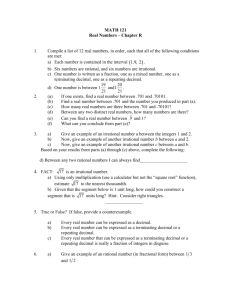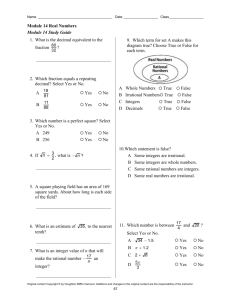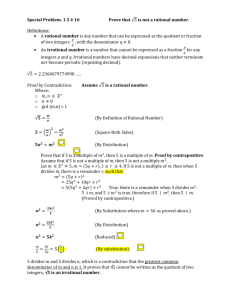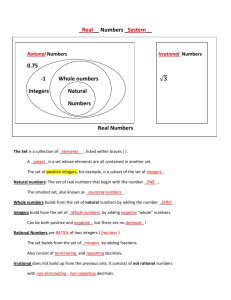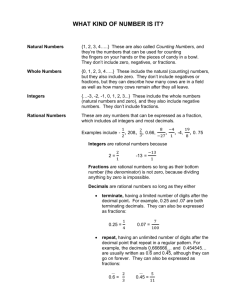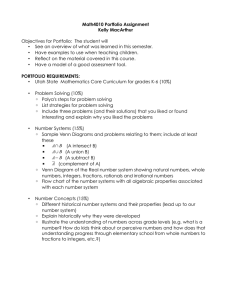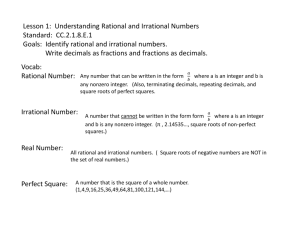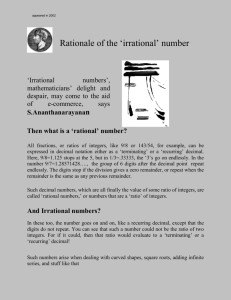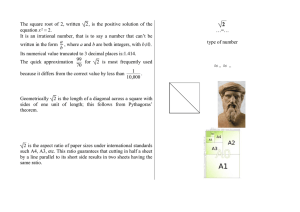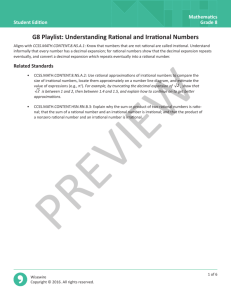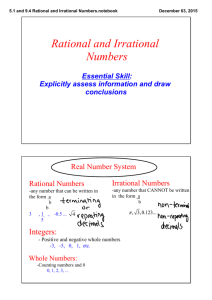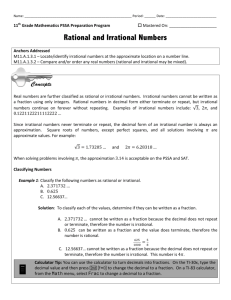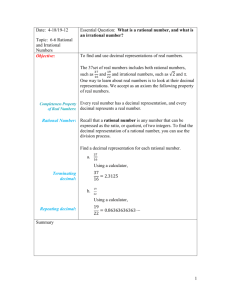Rational and Irrational Numbers
advertisement
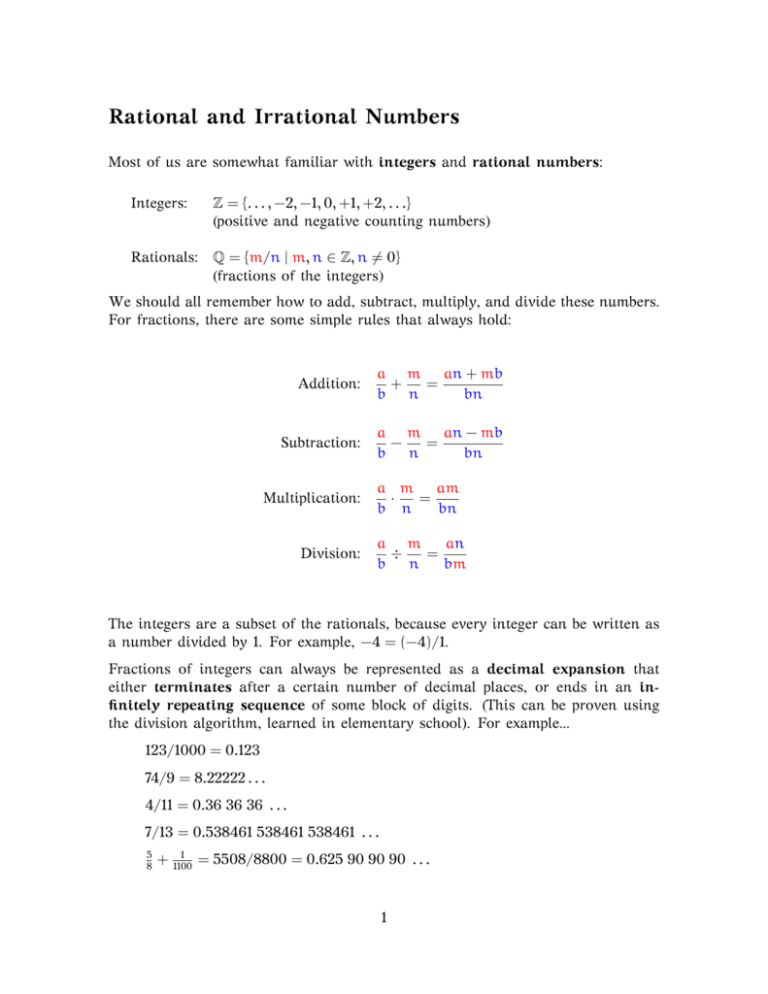
Rational and Irrational Numbers
Most of us are somewhat familiar with integers and rational numbers:
Integers:
Z = {. . . , −2, −1, 0, +1, +2, . . .}
(positive and negative counting numbers)
Rationals:
Q = {m/n | m, n ∈ Z, n 6= 0}
(fractions of the integers)
We should all remember how to add, subtract, multiply, and divide these numbers.
For fractions, there are some simple rules that always hold:
Addition:
an + mb
a m
+
=
b
n
bn
Subtraction:
a m
an − mb
−
=
b
n
bn
Multiplication:
Division:
a m
am
·
=
b n
bn
an
a m
÷
=
b
n
bm
The integers are a subset of the rationals, because every integer can be written as
a number divided by 1. For example, −4 = (−4)/1.
Fractions of integers can always be represented as a decimal expansion that
either terminates after a certain number of decimal places, or ends in an infinitely repeating sequence of some block of digits. (This can be proven using
the division algorithm, learned in elementary school). For example...
123/1000 = 0.123
74/9 = 8.22222 . . .
4/11 = 0.36 36 36 . . .
7/13 = 0.538461 538461 538461 . . .
5
8
+
1
1100
= 5508/8800 = 0.625 90 90 90 . . .
1
Any decimal expansion can be written as an infinite sum of fractions as in the
following...
1.123 123 123 . . . = 1 +
1
2
3
1
+
+
+
+ ...
10 100 1000 10000
If we wanted, we can also form sums like this which are not terminating and
contain no repeating blocks. Such numbers are still well-defined, however they
are not rational: we call them irrational. Some examples...
1.09 009 0009 00009 . . .
√
3 ≈ 1.732050807568877 . . .
Two of the most important numbers in all of mathematics are the following irrational numbers:
The number Pi
The Natural Base
π ≈ 3.14159
e ≈ 2.71828
It is important to note that any irrational number can always be approximated
by a decimal number in almost any mathematical expression. And, the more
decimal places you add, the better the approximation gets. For example, we know
√ 2
that 2 = 2, exactly.
√ 2
2 ≈ (1.4)2 = 1.96
√ 2
2 ≈ (1.414)2 = 1.999396
√ 2
2 ≈ (1.41421)2 = 1.9999899241
As we add more decimal places, we get a sequence of numbers that gets closer
and closer to 2, the exact value.
The set of all rational and irrational numbers is denoted by R.
2





